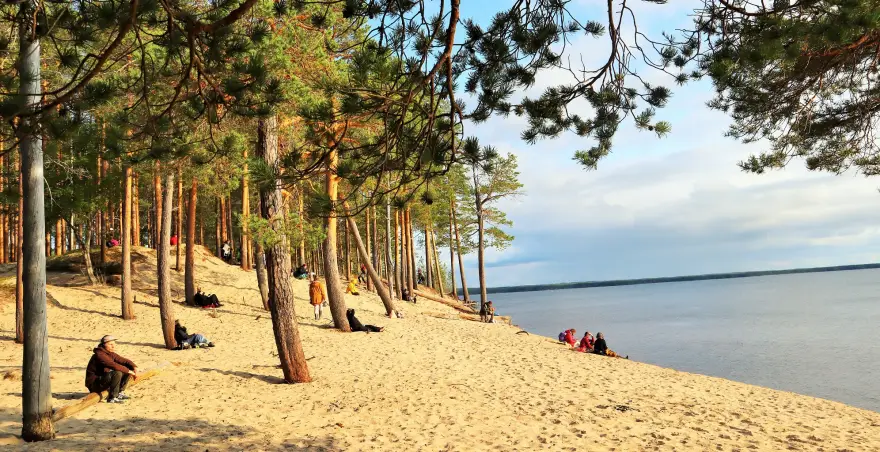Ecology and Locality Are at the Heart of the Vaara Collective

Based in Kainuu, the Vaara Collective is an independent professional theatre group whose work is ecologically ambitious and deeply rooted in local contexts. Deep ecology is embedded in the planning, execution, and themes of their performances.
According to Elsa Lankinen, a member of Vaara Collective, the group’s ecological values are not strategically imposed but arise from a shared ethical foundation among its roughly twenty members. Ecological themes and local topics are often at the core of their works, which have addressed, for example, the Talvivaara (now Terrafame) mine, debates concerning large carnivores, environmental emotions, and forest conflicts in Kainuu.
In practice, the operations of the collective are sustainable and creative, even though currently lacking formal metrics or monitoring systems. For instance, the inclusive theatre performance Kertomusten kehällä (loosely “Campfire stories”), which toured elementary schools in 2025 and was funded by the Ministry of the Environment, was built entirely from visual elements of previous productions. Scenery and masks were pulled from storage, and any new elements were made from recycled materials, such as secondhand clothes that were printed with botanical patterns using plant-based dyes by the visual artist in the team.
The play exemplifies both material and content-based circularity: previously used characters and themes were recontextualized and brought to new life. According to Lankinen, this way of working deepens the relationship to both materials and topics—there’s no need to start from scratch every time.
The collective wants to extend the lifecycle of works and materials. Sets, costumes, and props kept in storage for years may find their way back on stage. In 2024, a ten-year-old children’s performance went on a new tour with slight updates. A set of crocheted woolen roots – soft objects that are pleasant to touch – used in a performance held at a retirement home have been passed around for years, from one viewer to another, from babies to the elderly. The roots embody how a simple, sensory-stimulating object can build bridges between audiences and generations.
Extending the lifespan of performances and materials is not only ecological but also supports artists’ well-being. Creative work doesn’t always mean producing something new from scratch; it can also be about refining existing work and deepening artistic practice. The conditions in Kainuu—such as affordable storage and a collective working approach—support this long-term orientation. Local collaborations with, for example, the city theatre and museum facilitate material reuse and borrowing, while the community-based approach makes the processes run smoothly.
The Ärjänsaari Festival Brings People Back to Basics
The Vaara Collective organises the biennial Ärjä Art Festival , carried out on ecological principles: no electricity and a leave-no-trace camping ethos. Ärjänsaari, once a UPM-owned recreation island, became a state-protected nature reserve after a long public dispute. The island functions both as a stage and as a framework for participation—every artist and visitor brings their own gear, prepares their own food, joins in the daily routines of camp life, and takes responsibility for their own waste in the absence of waste management infrastructure.
Slowness, simplicity, and community are not just practical choices but are part of the festival’s artistic and political core message: living differently is possible—and even rewarding.
Lankinen emphasizes that ecological responsibility doesn’t fall on individuals alone; it’s about shared structures and collective agency. When planning the first editions of the Ärjä Festival, the collective carefully considered how to communicate about the island and the event in a way that would inspire people to become part of the sustainable community the festival seeks to build. When the infrastructure is stripped away, people often experience the change as empowering rather than limiting.
Limited resources do pose challenges. For example, the carbon footprint of the festival hasn’t been calculated because all available capacity goes into organizing the event itself. Today, the festival is held biennially, giving both organizers and the island’s nature time to rest.
One unique feature of the cultural field in Kainuu is its sparse population and small but distinctive offerings. If you want something to happen, you have to make it yourself—giving rise to a one-of-a-kind, locally rooted culture of doing. The art grows directly out of the surrounding life and communities. As a result, the work is inevitably community-based, and individualism takes a back seat when the focus of art is on how we live in this time and place and take care of each other and the world around us.